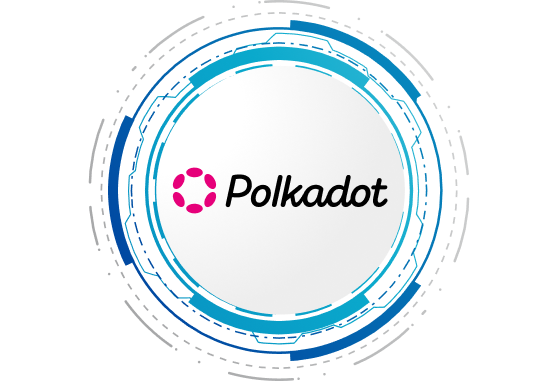

This website stores cookies on your computer. These cookies are used to collect information about how you interact with our website and allow us to remember you. We use this information in order to improve and customize your browsing experience and for analytics and metrics about our visitors both on this website and other media. To find out more about the cookies we use, check our Privacy Policy
Agree & Close


We believe, we are striding into the next phase of human evolution where technology negates the human miseries and we humans can work towards sustaining humanity. We constantly focus on innovations to make this future closer to us.
Explore this whitepaper on Generative AI in Banking and Financial Services. Discover its potential to transform business and improve billions of lives.
In this whitepaper, we will explore generative AI and identify business growth opportunities it offers. We aim to provide business owners with a comprehensive guide to using AI to unlock new opportunities and achieve sustainable growth. We will explore how generative AI can be used to analyze data and identify patterns, as well as how it can be used to generate new ideas and solutions.
This Whitepaper explores Web3, a decentralized web built on blockchain technology, and its potential benefits for businesses. The benefits of transparency, security, user control, and tokenization are highlighted in the paper. To better understand the technology, it refers to Web2 and Web2.5 as predecessors to Web3. Security, privacy, and regulatory concerns are all acknowledged risks. The paper also emphasizes Web3's potential to transform industries and encourages businesses to stay ahead of the curve and embrace the Internet's future.
This whitepaper will explore the essentials for launching a successful blockchain product. In the first section, we’ll explore how to choose the right blockchain for developing your DApp. In the second section, we’ll explore the essentials for DApp development, including the best practices, methodologies, common vulnerabilities, audit process, and tools. In the final section, we’ll explore the fundamentals of token economy design for your blockchain project.
Here's a step-by-step checklist to get your e-Learning project off the ground. This guide includes technical functionalities, a feature list, and more viable information for your project.
Do you intend to create an NFT marketplace? Do you want to learn how to build an NFT marketplace platform from the ground up? Here's a handy checklist to get you started. This document contains technical specifications, a feature list, and other useful information for your NFT project.
Polkadot is an interoperable, secure, and extremely fast public blockchain. dApps and services on Polkadot can securely communicate across different blockchain networks, forming the basis for a truly decentralized web. Check with our experts to know if Polkadot suits your project requirement.

Consult our blockchain experts to know how our blockchain development capabilities can help you build scalable decentralized solutions.
Learn MorePolkadot is a fast and scalable blockchain network that helps establish a connection between networks that are not usually interoperable. Its parallel blockchain or para chains minimize the load on the main chain to make the transactions within the Polkadot network fast and scalable. The bridge, or a connecting layer, eases the transfer of data and value to even non-blockchain databases. DOT, the native token, is used for staking and as a measure of governance.
The Polkadot’s development is overseen by the Web3 Foundation, which aims to popularize the concept of a decentralized web for data security and autonomy.

Polkadot is a fast and scalable blockchain network. It allows components, such as Relay Chain , Parachains , and Nominated Proof-of-Stake (NPoS) to delivers enterprise-ready network security, scalability, and confidentiality. Take a look at the primary components that a PolkaDot network has.

The central chain of Polkadot, the relay chain, is built using Substrate. Relay chain is responsible for the shared security in the network, consensus and cross-chain interoperability.

Connected to the Relay Chain, Polkadot’s parachains are independent layer-1 blockchains that run in parallel to each other. Each parachain can have an individual design, token economy, and functionality.

When parachains are connected to Polkadot using a pay-as-you-go model, they are called parathreads. Entry barrier for blockchains are lowered thus it does not need continuous connectivity to the network.


Special parachains that Polkadot to connect and communicate with external networks are known as Bridges. Specially designed making the Polkadot ecosystem compatible with external blockchains.

Polkadot’s consensus mechanism is a nominated proof-of-stake (NPoS) network, designed to maximize chain security with the roles of validators and nominators.

Polkadot has a sophisticated system of governance where DOT holders can register to be considered for the Polkadot Council that consists of 13 members with a fixed term of seven days.
Polkadot is a public blockchain that is interoperable, safe, and efficient. See what more benefits it has to offer for building your blockchain project.

Since the parachains lighten the load for the main relay chain, transaction rates reach upto 1000 transactions per second.

The consensus mechanism in Polkadot is a proof of stake mechanism which calls on techies validators that have staked their DOT on the network.

As some say, Polkadot offers true interoperability between networks like Bitcoin, Ethereum, and non-blockchain networks.

With multiple parachains existing within Polkadot, it can support multiple smooth transactions in the blockchain.

Polkadot can be customized easily using the Substrate network, making it a brilliant choice for developers.

Though each parallel chain is independent, the security is unified. This makes the whole network secure.
We have curated few parameters for you to match with your Blockchain project development, See if Polkadot is the right choice for your blockchain project.
Public
Private
Consortium
Anonymous
Speed
Avg Gas fee
Interoperable
Native token support
Yes
No
No
No
1000 TPS
0$
Yes
Yes
Discover the essentials for blockchain DApp development, best practices, auditing, tokenomics model, and more.
Polkadot is a next-generation blockchain that attempts to promote a heterogeneous multi-chain framework. Look at all the business opportunities it can bring to enhance innovation and efficiency.

A Polkadot parachain optimized for DeFi. Acala was one of the first parachains to deploy on Polkadot’s test network Rococo. Acala aims to become DeFi hub for the entire ecosystem while bringing financial stability, liquidity, and accessibility.

Moonbeam hopes present the closest experience to Ethereum while unholding some of the valuable functionality Polkadot has to offer.

The Polkadot based project that provides an identity layer. The platform is built to verify Internet-based identity credentials. It’s primary use comes as the Internet of Things.

A smart contract platform which uses the blockchain’s Substrate framework. Its mainnet already supports layer-2 solutions such as State Channels Plasma and Rollups.

Cross-chain identity built by RockX’s Lam is tipping Litentry will demonstrate deep knowledge in technical execution which is crucial for quick launch on Polkadot.

Interlay is building a Bitcoin-Polkadot bridge with cross-chain infrastructure and DeFi products. This will allow users to use their BTC to tokenize and transact on Polkadot’s DeFi platforms.
Here are answers to some questions about PolkaDot that our clients frequently ask. Drop us a word if the answers to your concerns or doubts aren't listed here. We'll get to you within 24 hours.
There are various aspects to data privacy within a blockchain network. Take a look at the below points to find out how to ensure data privacy within a Hyperldger Fabric blockchain network:
Depending upon the seniority of the blockchain development team, the number of resources required, types of resources required, and the costs involved in a blockchain application development vary. To get an estimated price for developing your project on Hyperledger Fabric, reach out to our blockchain experts.
There are various aspects to data privacy within a blockchain network. Take a look at the below points to find out how to ensure data privacy within a Hyperldger Fabric blockchain network:
There are various aspects to data privacy within a blockchain network. Take a look at the below points to find out how to ensure data privacy within a Hyperldger Fabric blockchain network:
There are various aspects to data privacy within a blockchain network. Take a look at the below points to find out how to ensure data privacy within a Hyperldger Fabric blockchain network: